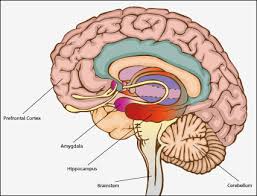TRAUMA EXPOSURE
A degree of psychological distress is very common in the early aftermath of traumatic experience and can be considered a part of the normal process. However, when distress continues, following a traumatic event, and is severe enough to interfere with important functioning of your life, it can no longer be considered as a normal response to traumatic exposure and Post Traumatic Stress Disorder should be considered.
I wrote an interesting article on Trauma – please read this for detailed information around Trauma. It is important to be reminded that trauma doesn’t always need to be directly experienced but can be experienced through witnessing the event or even learning that a traumatic event happened to someone you love.
Many therapies can assist in working with Trauma, but in this article I wanted to talk about EMDR…
What is EMDR?
The mind can often heal itself naturally, in the same way as the body does. Much of this natural coping mechanism occurs during sleep, particularly during rapid eye movement (REM) sleep. Francine Shapiro developed Eye Movement Desensitisation and Reprocessing (EMDR) in 1987, utilising this natural process in order to successfully treat Post-traumatic Stress Disorder (PTSD). Since then, EMDR has been used to effectively treat a wide range of mental health problems. Today, EMDR is a set of standardised protocols that integrates elements from various treatment approaches.
What happens when you are traumatised?
Most of the time your body routinely manages new information and experiences without you being aware of it. However, when something out of the ordinary occurs and you are traumatised by an overwhelming event (e.g. a car accident) or by being repeatedly subjected to distress (e.g. childhood neglect), your natural coping mechanism can become overloaded. This overloading can result in disturbing experiences remaining “frozen in time” in your brain or being “unprocessed”. Such unprocessed memories and feelings are stored in the limbic system of your brain in a “raw” and emotional form, rather than in a verbal “story” mode. This limbic system maintains traumatic memories in an isolated memory network that is associated with emotions and physical sensations, and which are disconnected from the brain’s cortex where we use language to store memories. The limbic system’s traumatic memories can be continually triggered when you experience events similar to the difficult experiences you have been through. Often the memory itself is long forgotten, but the painful feelings such as anxiety, panic, anger or despair are continually triggered in the present. Your ability to live in the present and learn from new experiences can therefore become inhibited. EMDR can be considered as a physiologically-based therapy that helps create the connections between your brain’s memory networks, enabling your brain to process the traumatic memory in a very natural way.
What is an EMDR session like?
EMDR utilises the natural healing ability of your body. After a thorough assessment, you will be asked specific questions about a particular disturbing memory. Eye movements, similar to those during REM sleep, will be recreated simply by asking you to watch the therapist’s finger moving backwards and forwards across your visual field, or sometimes, a bar of moving lights or headphones is used instead. The eye movements will last for a short while and then stop. You will then be asked to report back on the experiences you have had during each of these sets of eye movements. Experiences during a session may include changes in thoughts, images and feelings. Each person will process information uniquely, based on personal experiences and values.
With repeated sets of eye movements, the memory tends to change in such a way that it loses its painful intensity and simply becomes a neutral memory of an event in the past. Other associated memories may also heal at the same time. This linking of related memories can lead to a dramatic and rapid improvement in many aspects of your life. During EMDR, you may feel intense emotions, but by the end of the session, most people report a great reduction in the level of disturbance.
Can anyone benefit from EMDR?
EMDR can accelerate therapy by resolving the impact of your past traumas and allowing you to live more fully in the present. It is not, however, appropriate for everyone. The process is rapid, and any disturbing experiences, if they occur at all, last for a comparatively short period of time. Nevertheless, you need to be aware of, and willing to experience, the strong feelings and disturbing thoughts, which sometimes occur during sessions.
What can EMDR be used for?
In addition to its use for the treatment of Post-traumatic Stress Disorder, EMDR has been successfully used to treat:
- anxiety and panic attacks
- depression
- stress
- phobias
- sleep problems
- complicated grief
- addictions
- pain relief, phantom limb pain
- self-esteem and performance anxiety
- sexual addiction
- performance enhancement
How long does treatment take?
One or more sessions are necessary for the therapist to understand the nature of the problem and to decide whether EMDR is an appropriate treatment for you. The therapist will also discuss EMDR more fully and provide an opportunity to answer questions about the method. Once therapist and client have agreed that EMDR is appropriate for a specific problem, the actual EMDR therapy may begin. EMDR can be brief focused treatment or part of a longer psychotherapy programme. EMDR sessions can be for 60 to 90 minutes. EMDR may be used within a standard “talking” therapy or a treatment all by itself.
Will I will remain in control and empowered?
During EMDR treatment, you will remain in control, fully alert and wide-awake. This is not a form of hypnosis and you can stop the process at any time. Throughout the session, the therapist will support and facilitate your own self-healing and intervene as little as possible. Reprocessing is usually experienced as something that happens spontaneously, and new connections and insights are felt to arise quite naturally from within. As a result, most people experience EMDR as being a natural and very empowering therapy.
What evidence is there that EMDR is a successful treatment?
EMDR is an innovative clinical treatment which has successfully helped over 2 million individuals. The validity and reliability of EMDR has been established by rigorous research. Over 20 controlled studies have investigated the effects and efficacy of EMDR. These studies have consistently found that EMDR effectively decreases or completely eliminates the symptoms of post-traumatic stress for the majority of clients. Clients often report improvement in other associated symptoms such as anxiety.
The current treatment guidelines of the following organisations designate EMDR as an effective treatment for post-traumatic stress:
- Australian Centre for Posttraumatic Mental Health
- Australian Department of Veterans Affairs
- Australian Psychological Association (Special Interest Groups Available for Psychologists for Peer Consultation)
- US Department of Veterans Affairs
- American Psychiatric Association and the International Society for Traumatic Stress Studies
- United Kingdom Department of Health
- Israeli National Council for Mental Health
- National Institute for Health and Clinical Excellence (NICE)
- and many other international health and governmental agencies
References:
http://guidelines.acpmh.unimelb.edu.au/practitioners



 Contact us on
Contact us on 

 Facebook
Facebook Twitter
Twitter Linkedin
Linkedin
